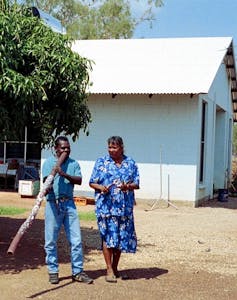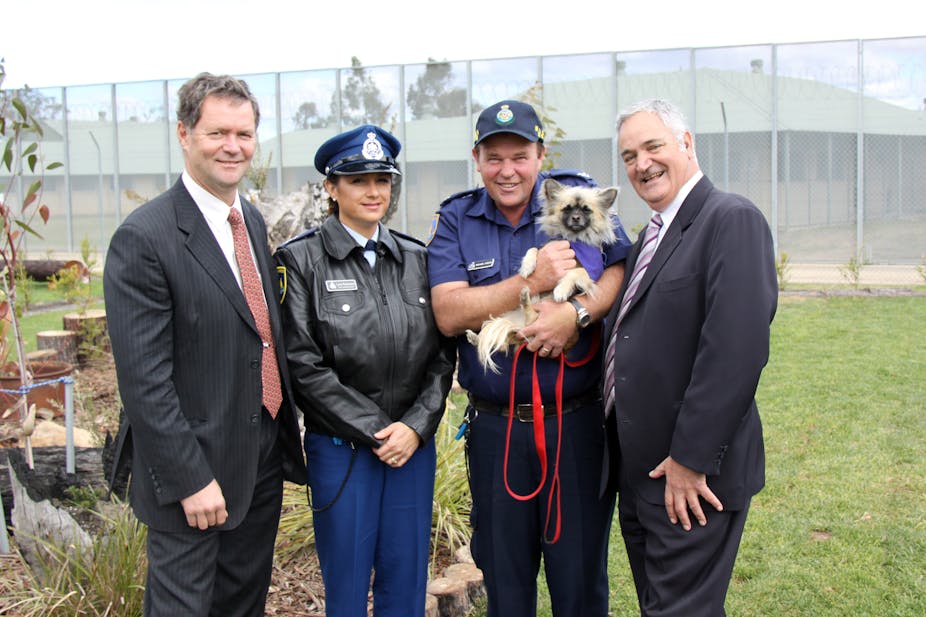This article is part of the Beyond Prison series, which examines better ways to reduce re-offending, following the recent State of Imprisonment series.
Although criminal justice agencies in Australia have, in recent years, adopted an increasingly “get tough” approach, responses to crime that rely on punishment alone have failed to make our communities safer. Instead, they have produced an expanding prison system. This has the potential to do more harm than good and places considerable strain on government budgets.
Increasing prison sentences does little to deter criminal behaviour. Longer sentences are associated with higher rates of re-offending. When prisoners return to their communities, as the vast majority inevitably do, the problems multiply.
Exposing the limitations of punishment
In this context, it becomes important to think carefully about public policy responses that aim to punish and deter offenders. Psychologists have been studying punishment under well-controlled laboratory conditions with both animals and humans for nearly 100 years. Its effectiveness in promoting short-term behavioural change, or even in suppressing negative behaviour, depends on rather specific conditions being in place.
For punishment to work it has to be predictable. Punishment also has to be applied at maximum intensity to work, or else tolerance and temporary effects result. Yet applying very intense levels of punishment for many offences goes against our sense of justice and fairness.
The threat of punishment, no matter how severe, will not deter anyone who believes they can get away with it. It will also not deter those who are too overcome by emotion or disordered thinking to care about the consequences of their behaviour.
Punishment also has to be immediate. Delayed punishment provides opportunities for other behaviours to be reinforced. In reality, it often takes months – if not years – for someone to be apprehended, appear in court and be sentenced.
Working towards more effective rehabilitation
Many of the conditions required for punishment to be effective will not exist in any justice system. It follows that policies and programmes that focus on rehabilitating offenders will have a greater chance of success in preventing crime and improving community safety.
The origins of offender rehabilitation in Australia can be traced back to the early penal colonies and, in particular, to the work of Alexander Maconochie, a prison governor on Norfolk Island in 1840. Maconochie introduced the idea of indeterminate rather than fixed sentences, implemented a system of rehabilitation in which good behaviour counted towards prisoners’ early release, and advocated a system of aftercare and community resettlement.

Maconochie’s ideas built on those of the great social reformers of 18th-century Britain, notably Quakers such as John Howard and Elizabeth Fry. They were among the first to try to change prisons from what they called “institutions of deep despair and cruel punishment” to places that were more humane and had the potential to reform prisoners’ lives.
These days, though, offender rehabilitation is often thought about in terms of psychological treatment. We can chart the rise of current programmes according to the broad traditions of psychodynamic psychotherapy, behaviour modification and behaviour therapy and, more recently, the cognitive-behavioural and cognitive approaches that characterise contemporary practice.
The earliest therapeutic work in the psychoanalytic tradition saw delinquent behaviour as the product of a failure in psychological development. It was thought this could be addressed through gaining insight into the causes of offending. A wide range of group and milieu therapies were developed for use with offenders, including group counselling and psychodrama.
In the 1980s, more behavioural methods – such as token economies, contingency management programmes and “time out” – replaced psychotherapy.
There are good grounds to develop standardised incentive models in Australia’s prisons. Community-style therapeutic programmes for prisoners with substance use problems in Victoria, NSW and the ACT represent substantial advances in practice.
These programmes take advantage of the significant therapeutic opportunities that arise by looking closely at prisoners’ social functioning and day-to-day interactions. They actively encourage offenders to assume responsibility not only for their own behaviour, but for that of others.
However, rehabilitation today is almost always associated with cognitive-behavioural therapy. This targets a relatively narrow range of crime-producing (or “criminogenic”) needs, including pro-criminal attitudes – those thoughts, values and sentiments that support criminal conduct. Programmes also dedicate a lot of time to trying to change personality traits, such as low self-control, hostility, pleasure- or thrill-seeking and lack of empathy.
Not everyone can be successfully treated. Substantial evidence now exists, though, to suggest that this type of approach does produce socially significant reductions in re-offending.
Essential steps in making corrections policy work
The challenges lie in ensuring that the right programmes are delivered to the right people at the right time.
First, it is important that low-risk offenders have minimal contact with higher-risk offenders. Extended contact is only likely to increase their risk of recidivism. This has implications for prisoner case management, prison design and for the courts.
Courts have the power to divert low-risk offenders from prison and thus minimise contact with more entrenched offenders. Related to this is the need to develop effective systems of community-based rehabilitation, leaving prisons for the most dangerous and highest-risk offenders.

Second, concerted efforts are required to develop innovative programmes for those who identify with Aboriginal or Torres Strait Islander cultural backgrounds. They are grossly over-represented across all levels of the criminal justice system.
Third, staff need to be properly selected, trained, supervised and resourced to deliver the highest-quality rehabilitation services to the most complex and challenging people.
Finally, it is important to demonstrate that programmes actually make offenders better, not worse. The types of evaluation that are needed to attribute positive change to programme completion are complex, require large numbers of participants and cross-jurisdictional collaboration. A national approach to programme evaluation is sorely needed.
This is not to suggest that criminal behaviour shouldn’t be punished – only that we should not rely on punishment by itself to change behaviour. We need to create a true system of rehabilitation that can enhance the corrective impact of punishment-based approaches.
It also doesn’t mean that punishment never works. It may work reasonably well with some people – perhaps those who are future-oriented, have good self-monitoring and regulation skills, and who can make the connection between their behaviour and negative consequences months later.
Unfortunately, many people in prison simply aren’t like this. The challenge, then, is two-fold: to find ways to make punishment more effective and to tackle the causes of offending through high-quality rehabilitation.
Correctional services often get little credit for their efforts. They are widely criticised when things go wrong. However, their efforts to rehabilitate offenders are not only sensible, but also cost-efficient and practical.
We need to support efforts to create a true system of rehabilitation. Such a system will be comprehensive, coherent and internally consistent in applying evidence-based practice at all levels.
This article is based on the author’s keynote presentation to the 2015 APS College of Forensic Psychologists Conference in Sydney.
You can read other articles in the Beyond Prison series here.

